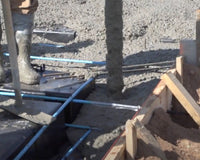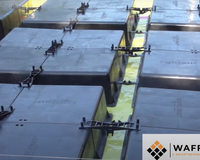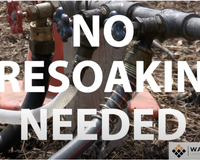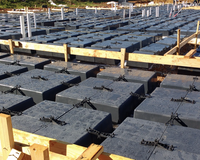Foundation stiffness ratings are an important factor to consider when building a home. They measure the rigidity of the foundation and its ability to resist lateral loads.
The more rigid the foundation is, the less likely it will move or shift under stress. This is especially important for homes with crawl spaces or basements because they're more susceptible to settling due to frost heaves, soil expansion and contraction, and seasonal changes in temperature.

Why Foundation Stiffness Ratings Matter
The primary purpose of a foundation is to support your house from the ground up, so the strength and durability of any home depends on its foundation. A weak foundation will result in cracks in walls and ceilings, sagging floors and other problems that may lead to structural damage over time.
You can check if there are any signs of foundational problems by looking for cracks in walls or ceilings close to where walls meet the ceiling; checking for uneven floors; and walking around your house listening for creaking sounds.
Once you determine that you have a problem with your home's foundation, it's time to hire an expert inspector who can come out and do a thorough investigation.
However, to avoid costly repairs, it is important to get the right kind of foundation in the first place.
Foundation stiffness ratings are particularly important on properties on expansive soils that experience differential movement. The higher the plasticity of the soil, the more likely your home will suffer from problems like cracking and shifting.
If you are building a new home and you have a choice of your foundation type, you should choose a Wafflemat Foundation. Wafflemat is the designed with void forms that accommodate for expansive soils, which means that it is able to resist differential movement between the soil and the structure.
Foundation stiffness ratings are different for different types of foundations.
The most common types of foundations are:
- Slab-on-grade (sometimes called "spread footings")
- Pier & beam
- Footing or Stem Wall
- Wafflemat Foundation
A slab-on-grade foundation can be as simple as an 8" thick concrete pad poured directly on top of the soil below. However, unless it is designed with void forms like the Wafflemat System, this type of foundation can lead to problems with moisture and ground movement.

A more traditional option is to use a footing or stem wall (a stem wall is just a thickened version of a footing). This type of foundation will usually have a thickness between 12"-18", depending on your local code requirements.
A stem wall foundation doesn't provide much space for insulation underneath, and it tends to require much more material to resist soil movement.

Pier & beam foundations consist of four columns (called piers) that extend down into the ground, with beams that span between them and support the house above. These types of foundations are very costly to build and repair, and require much more time and resources to construct.

A Wafflemat foundation is the best choice for your new home. This type of foundation offers many advantages over other types of foundations, including:
It is easy to install.
The Wafflemat foundation comes in sections that are easily set into place and secured with clips. With this type of foundation, you don't have to dig trenches or pour concrete into forms, which can be time-consuming and expensive.
It provides excellent support for your home's structure.
Because the Wafflemat sections are designed to accommodate for expansive soils, they provide more stability against differential movement than other types of foundations.

Wafflemat is good for the environment.
The Wafflemat foundation system is made from recycled plastic forms called Waffleboxes. Installing these forms keep consumption of materials low as there is less concrete, water, and steele required than a traditional foundation.
Wafflemat even won the Clean Air Award in Green Building after a study was released stating that using the Wafflemat System helps reduce CO2 emissions.
The Wafflemat foundation is a great choice because it offers an incredible stiffness rating compared to traditional slabs and is designed specifically to resist differential movement from expansive soils.
Foundation stiffness ratings can be confusing, but if you're having issues with your foundation, there's a good chance it's a result of low stiffness.
Always make sure your builder is using stiffer materials that are rated to deliver value for your home for many years to come. When it comes to planning, choose a qualified engineer with experience in foundation design.
Click here to contact Wafflemat's in-house engineers.
Remember; proper planning at the beginning of your project will save you from future headaches and costly repairs.





